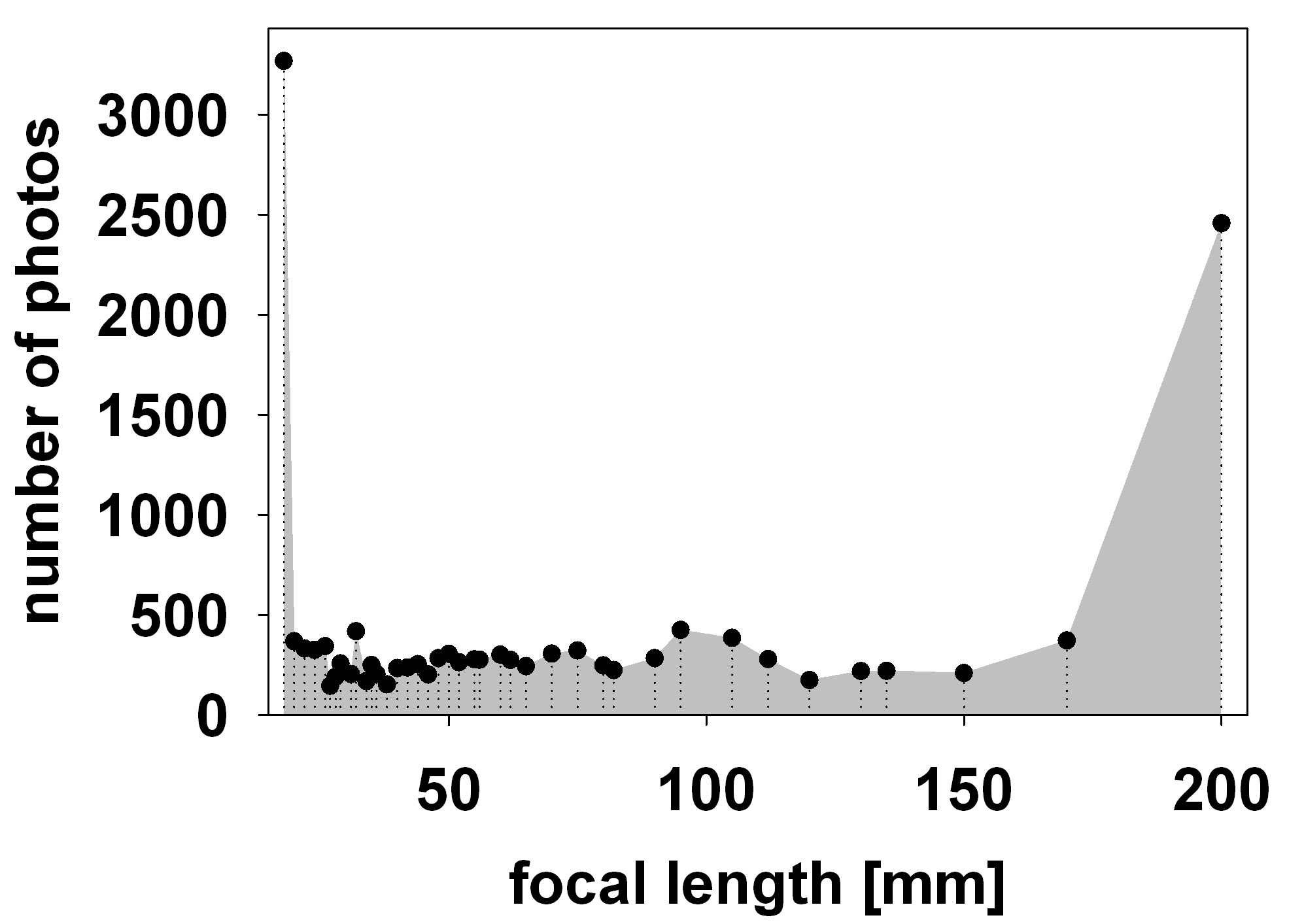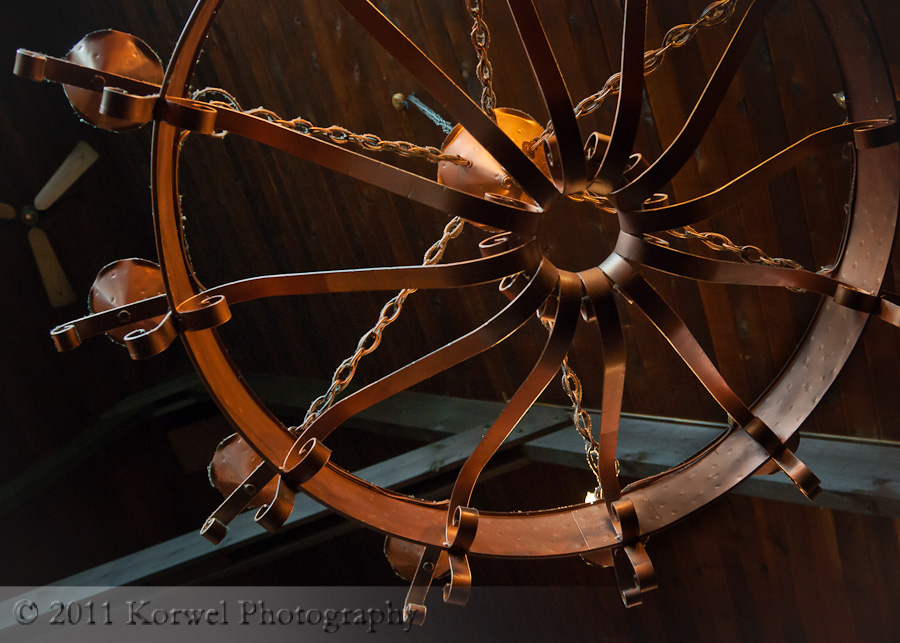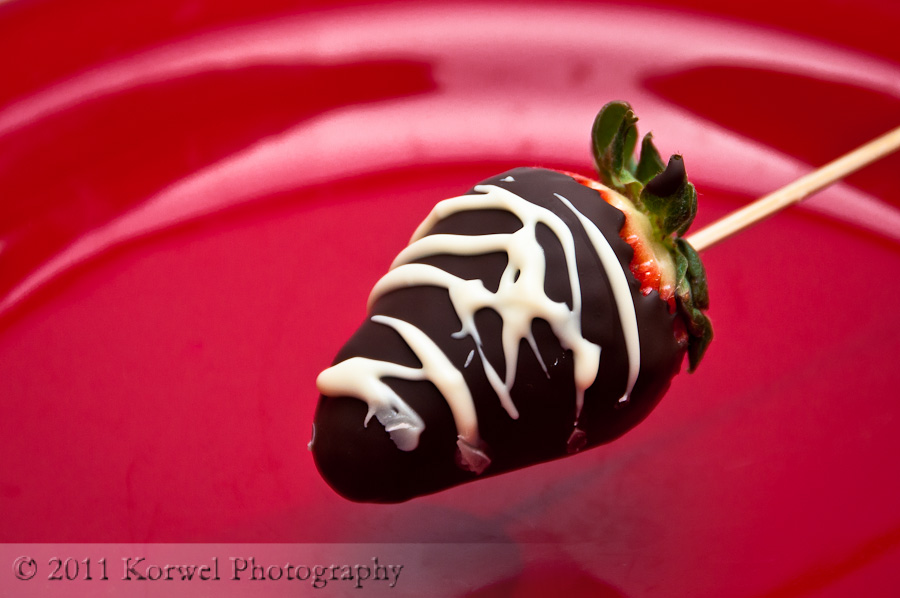Metadata, lenses and statistics
Lightroom not only collects and organizes all the pictures. It helps you find an image you need by keyword (if you do the good job keywording) or by the date. But it also stores a wealth of information about the gear you use – camera, lens, focal length, aperture…. When you are planning to buy a new lens, and you are not sure what focal length to choose, it is a good idea to take a look at the use you put on your all-in-one zoom, if you have one, to figure out what is your photographic style. I am not planning on making any purchase soon, but I thought it might be an interesting exercise.
As I am a scientist by day, and gather data into plots and tables all day long, excuse me my dry visualization technique for today’s post. I just put into software the numbers from Lightroom for my 18-200 mm zoom lens on my “newer” body, D300 (approximately last two years).
I was a bit surprised by the plot. I was expecting that I am shooting mostly in the shorter focal length, wide-angle and maybe some “normal”, about 50 mm. Well, not entirely. There is some difference between the number of images at 18 mm vs 200 mm, but it is only about 1/3 less photos at the longest focal length! Other then that, all other focal lengths are being used more or less to the same extend.
I do not entirely understand how Lightroom counts those focal length, there seems to be more diversity at the wide-angle side of the plot then there is on the telephoto. Anybody out there has an idea?
After looking at the plot, I went back to the Lightroom library to browse the images.
The wide-angle side of the lens is being used in my hands for just about everything. There are landscape shots, but also environmental portraits, used here as general term for both people and other subjects, like plants or airplanes. Those “take all in views” or “put all crap in one image”. This is good not only for sweeping vistas, but also for tight interiors. Or even single subject close-up shots, like this one of the lamp in the Mexican restaurant, covered in cobwebs.
On the long side of spectrum, at 200 mm, there is a lot of shots of objects I simply to couldn’t otherwise reach and fill the frame with them. Wildlife, butterflies, airplanes. But also surprisingly many studio shots of food items. However, I am sure I was not aware of compressing qualities of the lens shooting those, it is something I just start to be aware of and have not consciously used yet.
It was interesting exercise. I have certain misconceptions about focal length- like wide-angle is for landscape, telephoto for airplanes. And yet even in my own photo library, there is probably more exceptions of those rules. I am currently reading once more David DuChemin’s first Craft & Vision e-books– “Ten”, “Ten more”, “Drawing the eye” and “Chasing the look” and I discover once again wealth of information I already should have known and use. Also on lenses. So, the new approach- telephoto compresses, and even with zoom lens use your feet to compose ;).
How about you? Take a look at the data in your Lightroom or other photo organizing software. Have you found any surprises? Are you using more a focal length you would never thought? What is your most often used focal length? WHat types of shots you do with it? Share you experience in the comments.


